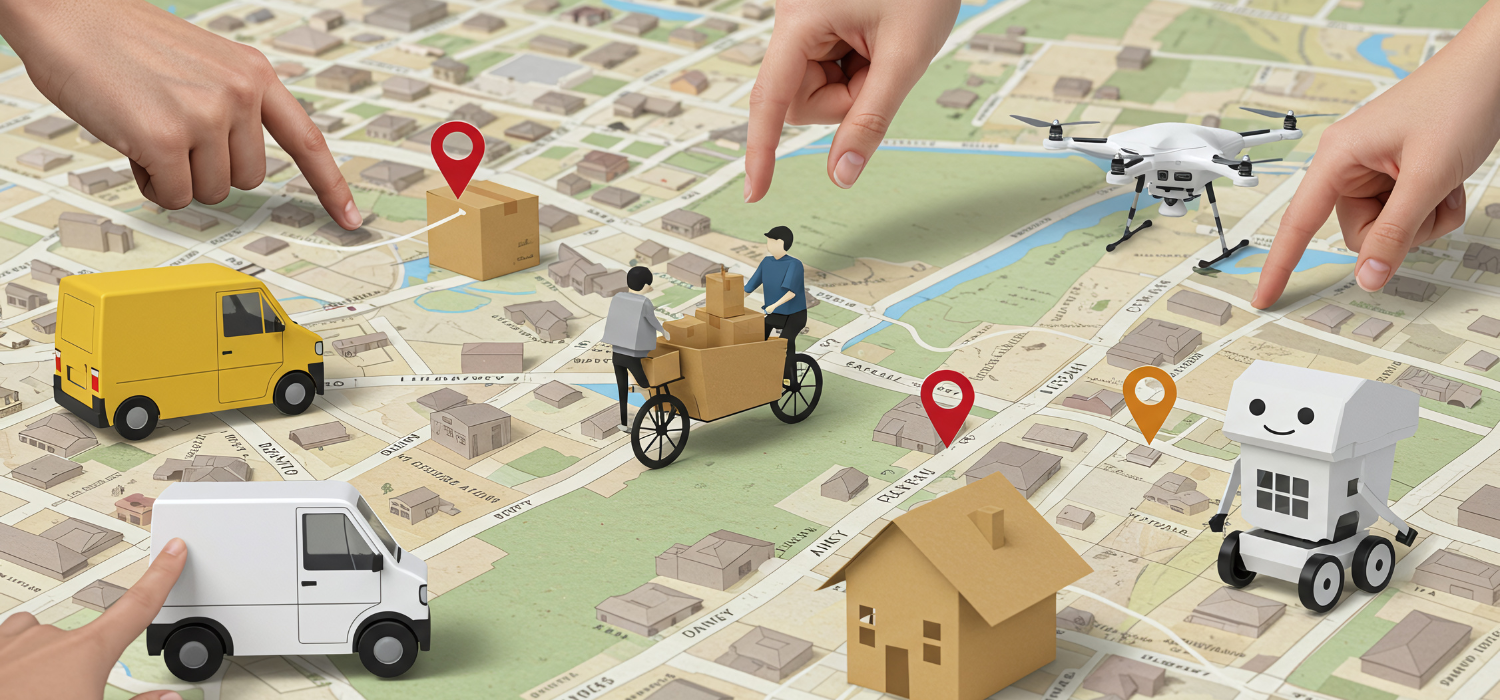In Italy, as in the rest of Europe, the shortage of drivers risks triggering a ‘crisis in the sector due to lack of personnel’. The alarm was raised in recent weeks by the Cgia – Association of Craftsmen and Small Enterprises of Mestre, according to which Italy is currently short of 22,000 drivers.
A situation made even more complex by the continuous and rapid growth of eCommerce: online orders are increasing and, as a result, deliveries need to be intensified and made more efficient.
Is there a solution that can avert the crisis? How can transport, at least last-mile transport, be made more efficient, even in the face of a driver shortage? In this article we will try to provide a possible solution.
All the facts about the driver crisis
In Italy, we have said it, there is a shortage of 22,000 drivers (Corriere della Sera, 11 August 2024).
The cause, or rather the causes, of the problem would mainly be attributable to the conditions of the profession, which lead drivers to face intense work days both physically and mentally, and to the lack of accessibility of licences, which today cost thousands of euros.
Figures in hand, compared to 2019, the number of freight driving licence holders has decreased by almost 410,000. Five years ago there were just under 1.2 million, now they are close to 770 thousand. The demographic groups between the ages of 30 and 54 have suffered a real collapse, by an average of 45-50%. Compared to the current stock, the over-50s account for 53.7% of the total (Il Messaggero, 11 August 2024).
In the next 10 years, therefore, due to the lack of generational turnover – the under 25s are on the rise (+65.9%), but in absolute terms this means only +2,855 drivers – Cgia Mestre estimates that half of the active drivers will retire.
The scale of the crisis in Europe
The alarming situation does not only concern Italy: according to the IRU – International Road Transport Union, there will be a shortage of over 700,000 drivers in 2028 between Europe, Norway and the UK.
In general, the average age of drivers in Europe is very high, with many drivers ‘over 55’ and only 5% of the total under 25.
As a result, transport companies complain of reduced productivity and declining revenues. In short, the consequences do not only affect the availability of goods, but also the health of the entire industry.
eCommerce figures
The numbers seen so far should then be analysed in the light of another important phenomenon: the growth of eCommerce. The spread of eCommerce, in fact, generates a growing demand for transport to cope with.
In 2024, according to data from the eCommerce B2C Observatory of the Politecnico di Milano, online purchases will be worth around EUR 38.4 billion, 6% more than in 2023.
Packages shipped as a result of online purchases are also on the rise: in the first quarter of 2024 alone, there was a 13.5% increase over the same period in 2023, for a total of 186 million packages shipped (Delivery Index 2024, Netcomm in collaboration with Poste Italiane).
In short, if the number of parcels to be transported increases, but the ability of companies to guarantee their transport falls due to a shortage of drivers, a worrying gap is clearly being created.
Is there a solution?
A possible solution to make last-mile transport more efficient
The problem is certainly complex and, as such, requires non-simplistic solutions. Above all, there is no single answer to the problem, which – as we have seen – is generated by different causes (lack of attractiveness, barriers to entry due to licence costs, work stress, and so on).
However, one possible answer regarding at least the last logistical mile comes from ‘Out Of Home’ deliveries, i.e. at Lockers and Pick-up Points, which allow to streamline logistical processes and reduce the pressure generated by the increasing number of eCommerce-related shipments.
In fact, this solution makes it possible to optimise delivery routes, reducing operating times and costs, while still guaranteeing 100 per cent delivery and, consequently, customer satisfaction. All with a positive impact in terms of environmental sustainability as well.
Lockers and Pick-up Points, how they can help to cope with driver shortages
Let us now take a more detailed look at the benefits:
- Optimisation of delivery routes: with lockers, couriers can deliver several parcels to a single pick-up point, instead of making several door-to-door deliveries. This consolidates deliveries and optimises routes, reducing the number of kilometres travelled and the delivery time. As a result, operating costs and environmental impact related to emissions are also reduced.
- Reduced transit time: since parcels can be delivered directly to lockers or pick-up points, which are often located in strategic and easily accessible areas, transit times can be reduced compared to home deliveries, especially in densely populated urban areas.
- Reduction of failed deliveries: one of the main challenges of last-mile logistics is failed delivery, which occurs when the recipient is not present at the time of delivery. Lockers and pick-up points solve this problem, as parcels are left in a safe and accessible location where customers can pick them up at their convenience. This reduces the number of delivery attempts, saving time and resources for couriers.
- System scalability: the use of lockers and pick-up points allows couriers and logistics companies to handle peak demand more efficiently. This system is easily scalable, as it does not require a direct increase in the workforce to handle more orders.
- More flexibility for consumers: lockers and pick-up points offer customers the possibility of collecting their parcels when it is most convenient for them, without having to coordinate their presence with the courier’s arrival. This flexibility increases customer satisfaction and reduces the operational burden of managing deliveries.
In short, Locker and Pick-up Points are certainly not the only answer to driver shortages, but they can certainly help cope with a critical situation.
Learn more about GEL Proximity and our Network of over 200,000 Pick-up Points and Lockers.













